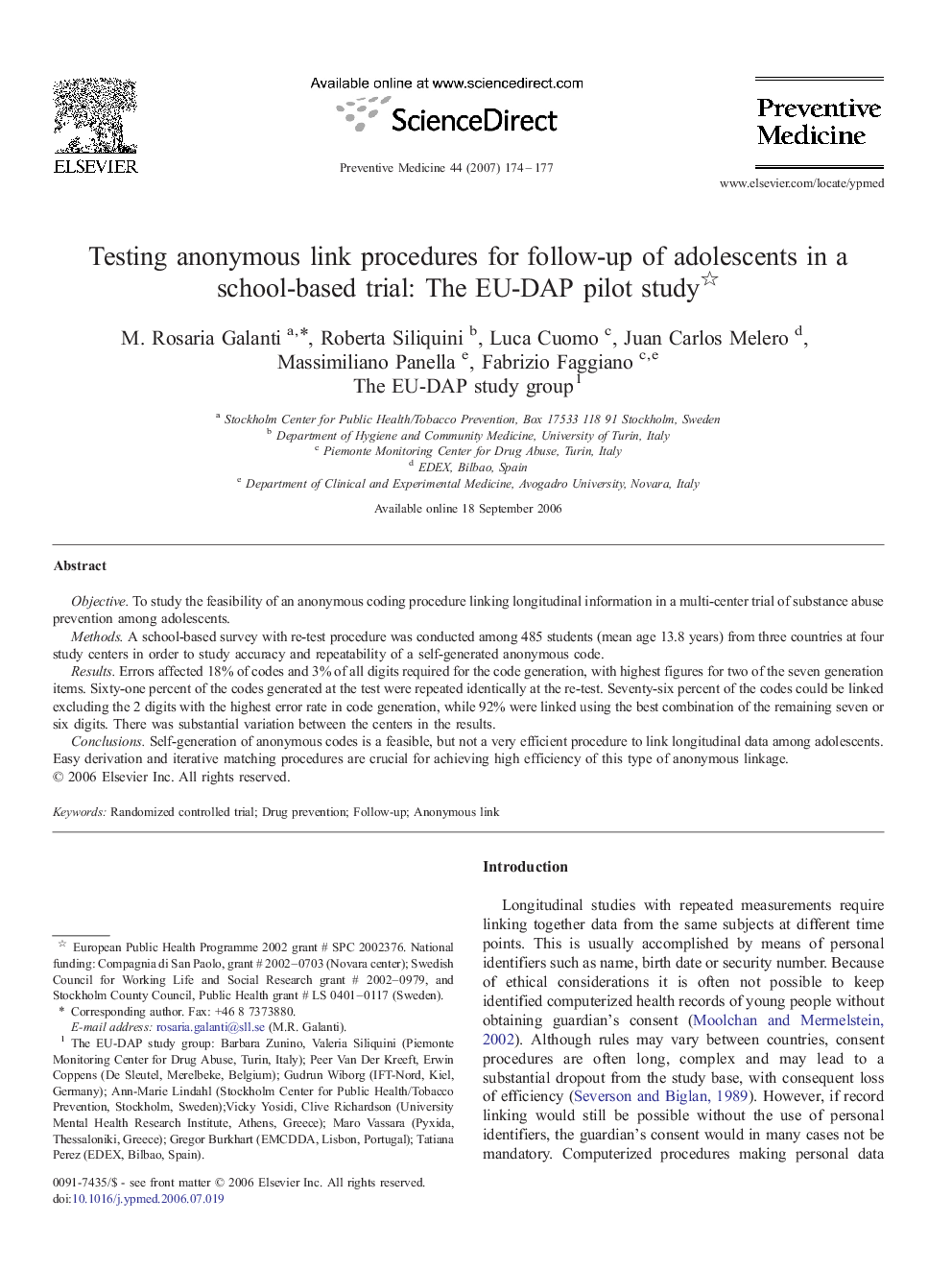| Article ID | Journal | Published Year | Pages | File Type |
|---|---|---|---|---|
| 3102047 | Preventive Medicine | 2007 | 4 Pages |
ObjectiveTo study the feasibility of an anonymous coding procedure linking longitudinal information in a multi-center trial of substance abuse prevention among adolescents.MethodsA school-based survey with re-test procedure was conducted among 485 students (mean age 13.8 years) from three countries at four study centers in order to study accuracy and repeatability of a self-generated anonymous code.ResultsErrors affected 18% of codes and 3% of all digits required for the code generation, with highest figures for two of the seven generation items. Sixty-one percent of the codes generated at the test were repeated identically at the re-test. Seventy-six percent of the codes could be linked excluding the 2 digits with the highest error rate in code generation, while 92% were linked using the best combination of the remaining seven or six digits. There was substantial variation between the centers in the results.ConclusionsSelf-generation of anonymous codes is a feasible, but not a very efficient procedure to link longitudinal data among adolescents. Easy derivation and iterative matching procedures are crucial for achieving high efficiency of this type of anonymous linkage.
